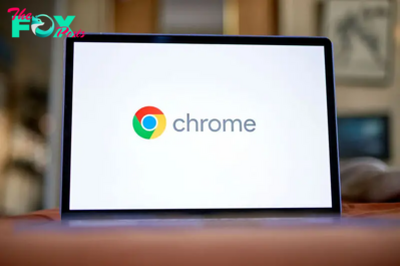Business
Kimberly Palmer: Creative ways to cut your energy costs this summer
Blasting the air conditioning to counteract stifling heat can provide much-needed relief this summer, but the utility bills that follow might not be as pleasant. According to the Bureau of Labor Statistics, the price of electricity has been steadily climbing over the past two years.
“Most U.S. households will continue to pay high costs for energy throughout the summer because of high energy prices and the anticipated hot temperatures,” says Courtney Klosterman, home insights expert at insurer Hippo.
The good news is you might have more control over your energy usage than you think. Paula Glover, president of the Alliance to Save Energy, a nonprofit that advocates for energy efficiency policy, estimates that based on numbers from the Energy Department, consumers could save 10% to 20% a year on energy bills just by shifting habits and making some energy-efficient investments. But, she adds, “You have to be diligent.”
Here are five steps you can follow to lower your energy bill this summer:
TAKE A BASELINE
Before making any changes, it’s helpful to examine how much energy you currently use, says Angie Hicks, co-founder of Angi, a website that provides information on home services. Hiring a professional to give your home an energy audit typically costs between $200 and $700 and gives you helpful information about where your home might be leaking, she adds. You can find one through local home service provider listings, and some utilities offer the service for free.
In certain cases, electronics themselves might be leaking, says Ethan O’Donnell, digital editor of FamilyHandyman.com, a website about home improvement projects. Televisions, appliances and all kinds of other electronics can use energy even when they are turned off, he says. A tool called an electricity usage monitor, which can be found for under $15, helps determine exactly how much.
O’Donnell discovered that his lamp, appliances and phone chargers were using more electricity than he realized even when powered off, so he made an effort to unplug them when possible and estimates he saves at least $50 a month from those changes.
ESTABLISH EFFICIENT HABITS
Simple changes like adjusting your thermostat, turning lights off when you leave the room and keeping windows and doors shut when the air conditioning is on can go a long way, Glover says. Installing a smart thermostat, which automatically adjusts the temperature based on time, your habits and the season, can also help, she adds.
Hicks suggests leaving window coverings closed during the day to help keep the sun’s heat out of your home and getting a seasonal tuneup to your air-conditioning system to make sure it’s working efficiently. Changing your air filter monthly or quarterly also helps it run better, she adds.
MAKE SMALL UPGRADES
Small home improvement projects, such as adding or replacing weather stripping that seals leaks around doors and windows, can significantly reduce your energy consumption, Hicks says. “Walk around your house with a lit candle and if the flame flickers, that’s where drafts are coming in. That’s a good candidate for weather stripping,” she says.
Another simple job involves swapping out incandescent bulbs for LED light bulbs, which use at least 75% less energy, according to the Energy Department. “It seems like nothing but has an enormous impact when we do it collectively,” Glover says.
UPDATE YOUR APPLIANCES
While purchasing new appliances can be expensive, the investment can pay off in energy savings, especially when you select products with the Energy Star certification, a program run by the Environmental Protection Agency. “If you have an old appliance and you can afford to upgrade to something energy-efficient, do that,” Glover says, but notes that you should also prioritize other home updates such as better insulation.
TACKLE HOME IMPROVEMENT PROJECTS
According to Angi’s State of Home Spending in 2022 survey, 29% of homeowners say they plan to add solar panels to their home within the next five years. Updating the heating, ventilating and air conditioning system, or HVAC, was another popular choice (23%). Those kinds of big investments can pay off over the long run, says Hicks, who adds that federal income tax credits are available to help offset some of those costs.
Installing doors as a barrier to different zones in the house can help improve efficiency by letting you control what gets warm and what stays cool, says Jonathan Flynn, a senior building analyst with Home Energy Consultants in Pleasant Valley, New York, and a certified Home Energy Rating System rater. “One of the big flaws in most two-story homes is that there is a stairway that leads up and no door at the top or bottom,” he says.
To prevent that energy leakage, Flynn installed a sliding door at the bottom of the stairs in his own home, but he recognizes that doing so might not be practical or desired by all homeowners with open floor plans. Still, he encourages homeowners to at least consider making these kinds of changes, even if they aren’t currently popular.
After all, he adds: “Energy efficiency work in your home is one of the few investments you can make that will actually pay you back.”
_________________________________
This column was provided to The Associated Press by the personal finance website NerdWallet. Kimberly Palmer is a personal finance expert at NerdWallet and the author of “Smart Mom, Rich Mom.” Email: [email protected]. Twitter: @KimberlyPalmer.
RELATED LINK:
NerdWallet: How to Lower Your Bills: 38 Ways to Save https://bit.ly/nerdwallet-how-to-lower-your-bills
METHODOLOGY
The State of Home Spending in 2022 survey was conducted by Angi on Oct. 21, 2021. It surveyed 5,000 consumers representative of the general population.
Angi The State of Home Spending in 2022 https://research.angi.com/research/reports/spending/
-

 Business1d ago
Business1d agoUS House passes measure that could punish nonprofits Treasury Department decides are ‘terrorist’
-

 Business1d ago
Business1d agoFast fashion may seem cheap, but it’s taking a costly toll on the planet − and on millions of young customers
-

 Business2d ago
Business2d agoNew Information: These HV Big Lots Are Now Staying Open
-

 Business2d ago
Business2d agoBrush Fire Rages On Near Butternut In Great Barrington, MA
-

 Business2d ago
Business2d agoU.S. Antitrust Regulators Seek to Break Up Google, Force Sale of Chrome Browser
-

 Business2d ago
Business2d agoSuccessful White Men Alone Can’t Create America’s Economic Future
-

 Business2d ago
Business2d agoThe Rise of Silent Services
-

 Business3d ago
Business3d agoTim Latimer



























